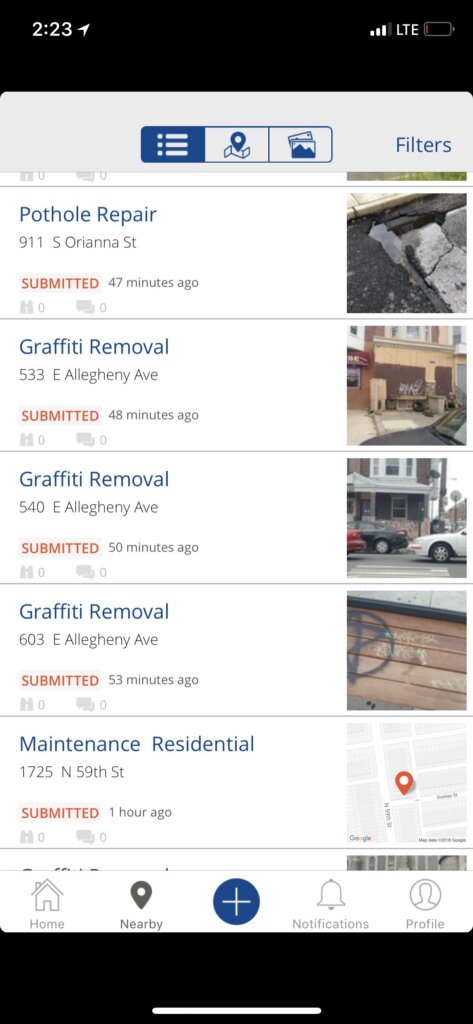Philly’s service request platform and civic engagement strategy show how cities can use mobile apps to build community

Cities searching for a next-level strategy on “citizen engagement” should visit the City of Brotherly Love.
With the launch of the Philly311 mobile app, Philadelphia has built an engagement program that connects its departments and citizens with quick communications and near seamless service response. The mobile app is Philly’s Swiss Army knife for service requests and the centerpiece of a city movement to improve neighborhoods, draw resident feedback and provide outreach to residents.
With a few swipes and a photo, residents use Philly311 to report graffiti, illegal dumping, abandoned cars, malfunctioning traffic signals and a litany of other pressing issues. Further, Philly311 enables staff to update residents on a job’s status, display nearby requests, list property license and inspection data, and even advise resident on weather conditions and after-school activities.

Philadelphia Mayor Michael Nutter launched the app, developed by Accela in 2012, with the program leadership of Rosetta Carrington Lue, the city’s first customer service officer and currently the senior contact center advisor at Veteran Affairs’ Office of Information & Technology (OIT). In its debut, the app saw instant success, with mobile requests jumping from 1,677 in the first year, and surging to 7,441 by the end of 2014. Today the app is a tool for community groups trying to clean up their neighborhood and belongs to a citywide service request management system that handles more than 650,000 resident questions and 150,000 citizen service requests per year.
“It is a top priority of this administration to ensure that everyone, in every neighborhood, has equal access to city services and information, said Philadelphia Mayor Jim Kenney of Philly311. “The city is committed to using new technology to build transparency and to improve service.”
Empowering Communities
While some might credit success to Philly311’s features and functions, the momentum driving the app’s use and adoption goes to the city, who embedded it into its larger civic engagement and innovation blueprint; and to the city’s residents, who embraced the app as a way to take action on community problems. As it was developed Mayor Nutter envisioned Philly311 as a service that enabled residents to connect with the city in multiple channels and on different topics. This is why the Philly311 mobile app is part of the larger system that also takes service requests on web, in email, through social media and inside the city’s non-emergency call center.
“With the new Philly311 customer service platform, our goal is not only to create a more connected, citizen-responsive city, but also to inspire other cities to follow our model and engage their citizens,” Mayor Nutter said in a release. “I made it a priority to enhance transparent and efficient government, increase integrity, build better open data practices and improve government accountability.”
While Philly311 is meant to solve problems for citizens, it does so by solving problems of city staff first. Accela’s Service Request Management (SRM), the system behind the app, saves money and speeds up service delivery by eliminating many manual processing tasks of staff. Requests can be routed to the proper agencies quickly, automated status and completion reports cut down on resident calls asking for updates, and a centralized system to manage requests means less data silos and demands on IT resources.
Kenney’s administration has expanded the ways residents can interact with Philly311 when it opened up its data in 2016. Philadelphians can view maps and charts of service requests and even get raw data. This includes requests to Philly311 that date back to 2014 that have come through calls, walk-ins, emails, website, social media and the app. When the data was released, Philly311 Director Tim Thornton said the added transparency was meant to help residents interpret the conditions and factors that impact their quality of life.
“We consider releasing this information and making it easy to understand as one more way that we provide a service to Philadelphians,” Thornton said. “The more we as a community can come up with accessible data, the more we can create solutions to complex problems.”
Click here to learn more about Accela’s Civic Solution for Service Request Management (SRM).



